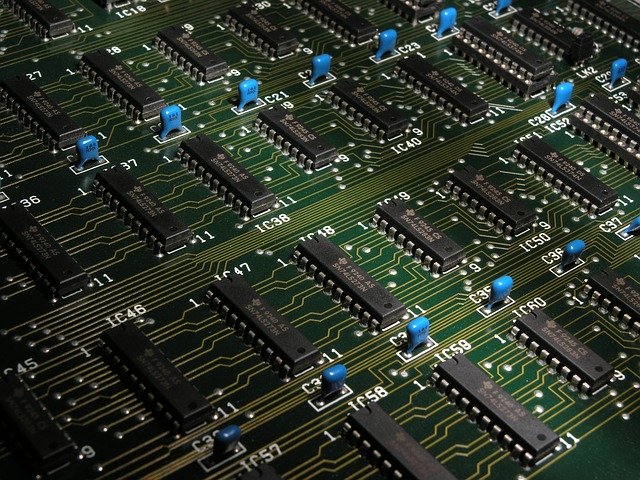Microchip

|
A microchip (also called a chip, integrated circuit or IC) comprises a series of electronic circuits on a small chip or semiconductor material that is typically made of silicon. It has almost completely replaced the use of the bulkier transistor and can be seen in the entire spectrum of electronic devices, including computers, mobile phones, TVs and radios, and a host of other domestic and industrial appliances.
Before the microchip, electronic components were huge: valves the size of domestic light bulbs and bigger. One of the first computers used by mathematician and codebreaker Alan Turing took up half a small room. The fact that today electronics can be compressed to the micro scale is largely due to the advent first of the transistor and more recently the microchip.
Traditionally, all the components of an electric circuit were placed on a board and joined together by wires or soldering. This created a very large, bulky circuit which resulted in correspondingly large appliances, whether radios, TV sets or computers.
In order to try and miniaturise the entire circuit, US-based electrical engineer Jack Kilby had the idea of replacing all the circuit components with a single material. He then hit on the idea of using a semi-conductor such as silicon which could act as required in various ways – either as a conductor of electricity or as an insulator.
Working at Texas Instruments in May 1958, Kilby experimented with slithers of silicon to create integrated circuits in which all the components were not conventional, single, freestanding entities but integrated into a whole. In the process, he invented the first monolithic integrated circuit – or microchip. In February 1959, he applied for a patent which was eventually granted five years later.
As with numerous other inventions where two inventors working independently claim to be the originators of an idea, another patent application for a very similar type of microchip was put in by Robert Noyce in 1959, very shortly after Kilby’s application. However, Kilby is regarded as the true inventor although some sources also credit Noyce.
Since Kilby’s invention, technical advances in the manufacture of metal-oxide-silicon (MOS) semiconductors have resulted in ever-increasing miniaturisation, accompanied by larger capacity chips working at much faster speeds. Modern microchips can have billions of MOS transistors in an area the size of a one-penny coin. The result is that today’s computer chips have capacities that are a million times greater and thousands of times faster than chips of the early 1970s.
Kilby went on to invent the first hand-held electronic calculator (1972) and became co-founder of Intel. He died in 1990 at the age of 62. In 2000, he was posthumously awarded the Nobel Prize for physics.
[edit] Related articles on Designing Buildings Wiki
Featured articles and news
Latest Build UK Building Safety Regime explainer published
Key elements in one short, now updated document.
UKGBC launch the UK Climate Resilience Roadmap
First guidance of its kind on direct climate impacts for the built environment and how it can adapt.
CLC Health, Safety and Wellbeing Strategy 2025
Launched by the Minister for Industry to look at fatalities on site, improving mental health and other issues.
One of the most impressive Victorian architects. Book review.
Common Assessment Standard now with building safety
New CAS update now includes mandatory building safety questions.
RTPI leader to become new CIOB Chief Executive Officer
Dr Victoria Hills MRTPI, FICE to take over after Caroline Gumble’s departure.
Social and affordable housing, a long term plan for delivery
The “Delivering a Decade of Renewal for Social and Affordable Housing” strategy sets out future path.
A change to adoptive architecture
Effects of global weather warming on architectural detailing, material choice and human interaction.
The proposed publicly owned and backed subsidiary of Homes England, to facilitate new homes.
How big is the problem and what can we do to mitigate the effects?
Overheating guidance and tools for building designers
A number of cool guides to help with the heat.
The UK's Modern Industrial Strategy: A 10 year plan
Previous consultation criticism, current key elements and general support with some persisting reservations.
Building Safety Regulator reforms
New roles, new staff and a new fast track service pave the way for a single construction regulator.
Architectural Technologist CPDs and Communications
CIAT CPD… and how you can do it!
Cooling centres and cool spaces
Managing extreme heat in cities by directing the public to places for heat stress relief and water sources.
Winter gardens: A brief history and warm variations
Extending the season with glass in different forms and terms.
Restoring Great Yarmouth's Winter Gardens
Transforming one of the least sustainable constructions imaginable.






















